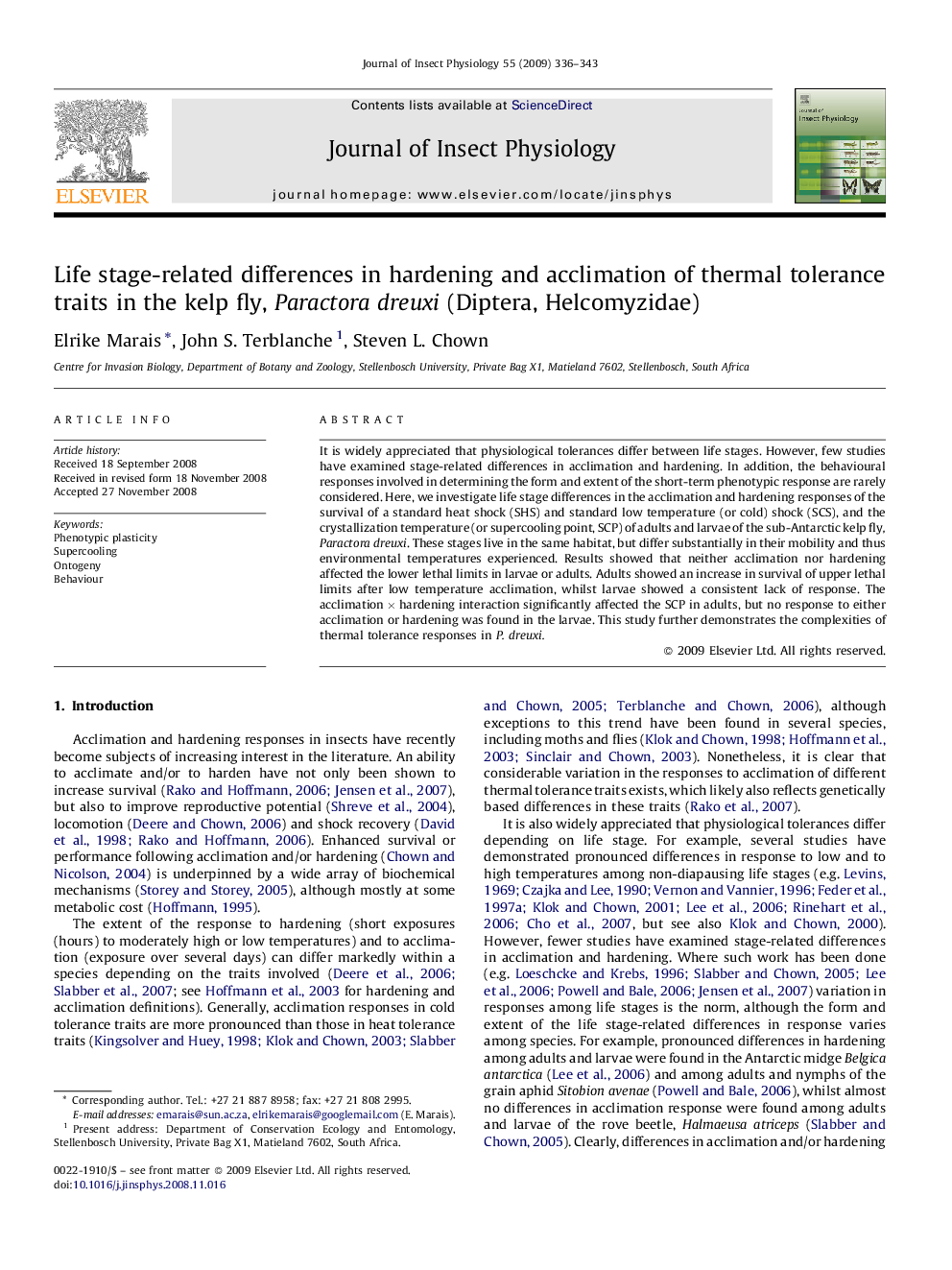| Article ID | Journal | Published Year | Pages | File Type |
|---|---|---|---|---|
| 2841139 | Journal of Insect Physiology | 2009 | 8 Pages |
It is widely appreciated that physiological tolerances differ between life stages. However, few studies have examined stage-related differences in acclimation and hardening. In addition, the behavioural responses involved in determining the form and extent of the short-term phenotypic response are rarely considered. Here, we investigate life stage differences in the acclimation and hardening responses of the survival of a standard heat shock (SHS) and standard low temperature (or cold) shock (SCS), and the crystallization temperature (or supercooling point, SCP) of adults and larvae of the sub-Antarctic kelp fly, Paractora dreuxi. These stages live in the same habitat, but differ substantially in their mobility and thus environmental temperatures experienced. Results showed that neither acclimation nor hardening affected the lower lethal limits in larvae or adults. Adults showed an increase in survival of upper lethal limits after low temperature acclimation, whilst larvae showed a consistent lack of response. The acclimation × hardening interaction significantly affected the SCP in adults, but no response to either acclimation or hardening was found in the larvae. This study further demonstrates the complexities of thermal tolerance responses in P. dreuxi.
